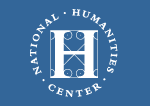

17th & 18th Centuries
19th Century
20th Century
Native American Religion in Early America
![]() Deism & the Founding of the US
Deism & the Founding of the US
Religious Pluralism in the Middle Colonies
![]() Church and State in British North America
Church and State in British North America
![]() The Separation of Church and State from the American Revolution to the Early Republic
The Separation of Church and State from the American Revolution to the Early Republic
The Church of England in Early America
Religion & the American Revolution

From Frederick Jackson Turner,
The Frontier in American History (1890)
from Ch. One.
The Middle region, entered by New York harbor, was an open door to all Europe. The tide-water part of the South represented typical Englishmen, modified by a warm climate and servile labor, and living in baronial fashion on great plantations; New England stood for a special English movement—Puritanism. The Middle region was less English than the other sections. It had a wide mixture of nationalities, a varied society, the mixed town and county system of local government, a varied economic life, many religious sects. In short, it was a region mediating between New England and the South, and the East and the West. It represented that composite nationality which the contemporary United States exhibits, that juxtaposition of non-English groups, occupying a valley or a little settlement, and presenting reflections of the map of Europe in their variety. It was democratic and nonsectional, if not national; “easy, tolerant, and contented;” rooted strongly in material prosperity. It was typical of the modern United States. It was least sectional, not only because it lay between North and South, but also because with no barriers to shut out its frontiers from its settled region, and with a system of connecting waterways, the Middle region mediated between East and West as well as between North and South. Thus it became the typically American region.

NHC Home | TeacherServe | Divining America | Nature Transformed | Freedom’s Story
About Us | Site Guide | Contact | Search

